About Hong Kong
When I was preparing for this post, I suspected that Hong Kong has an outstanding position in the world economics. Although I didn’t think that this position is so high: Hong Kong possesses the highest Financial Development Index score and in 2016 has crowned the World Competitiveness Yearbook leaving Switzerland is on the 2nd place, Germany on the 12th and Russia is on the 44th. This, probably, explains the high prices in this megapolis. Oh, how high they are! Hong Kong even beats New York at some points, not talking about Berlin. Nevertheless, cheer up those who travel on a budget, there is also a good news: in the bars area they have happy hour all around and in Hong Kong you can eat in the world’s cheapest Michelin-starred restaurant.

City jungles
Hong Kong is literally translated “Fragrant Harbor” or “Incense Harbor” from Chinese. Indeed, the harbor plays a great role in the life of the city and is one of the most popular touristic attractions. This megapolis is actually built on the harbor: the main Hong Kong regions are Hong Kong Island, the Kowloon Peninsula, the New Territories and the biggest of over 200 islands Lantau Island. Hong Kong owes its well-spoken English to the British colonial times.

Local kids
I would describe the atmosphere in Hong Kong with the words “Asian flair with international touch”. For me, it is indeed a wild mixture, a fusion of the modern world and ancient culture. There are hundreds of skyscrapers getting along with the hidden Chinese temples and small restaurants offering traditional cuisine. The jungle diligently struggling taking back the places it once owned. The humankind attempting to build as much as possible on one square meter of ground. Eternal confrontation giving birth to such bright and attractive contrast…

Nature is taking back what belonged to it
The city is very clean, partly because of the high fines for throwing waste onto the streets or smoking in public places, partly because of the proper culture of behavior on the streets. By the way, we have seen almost no beggars in the city: we have spotted only two! Instead of this, plenty of people are “begging” to buy marijuana from them. Yet the first popular offer you get on the streets is to visit a tailor salon.

Chinese temple in the middle of stone and glass jungles

Chinese temple
In the city jungles, you can stumble upon quite unexpected things: a Chinese temple lost between the skyscrapers, an eco – graffiti park in the overground passage or handrails dressed in knit work. One of the great experiences is an endless riding trails through SOHO.

Riding through SOHO
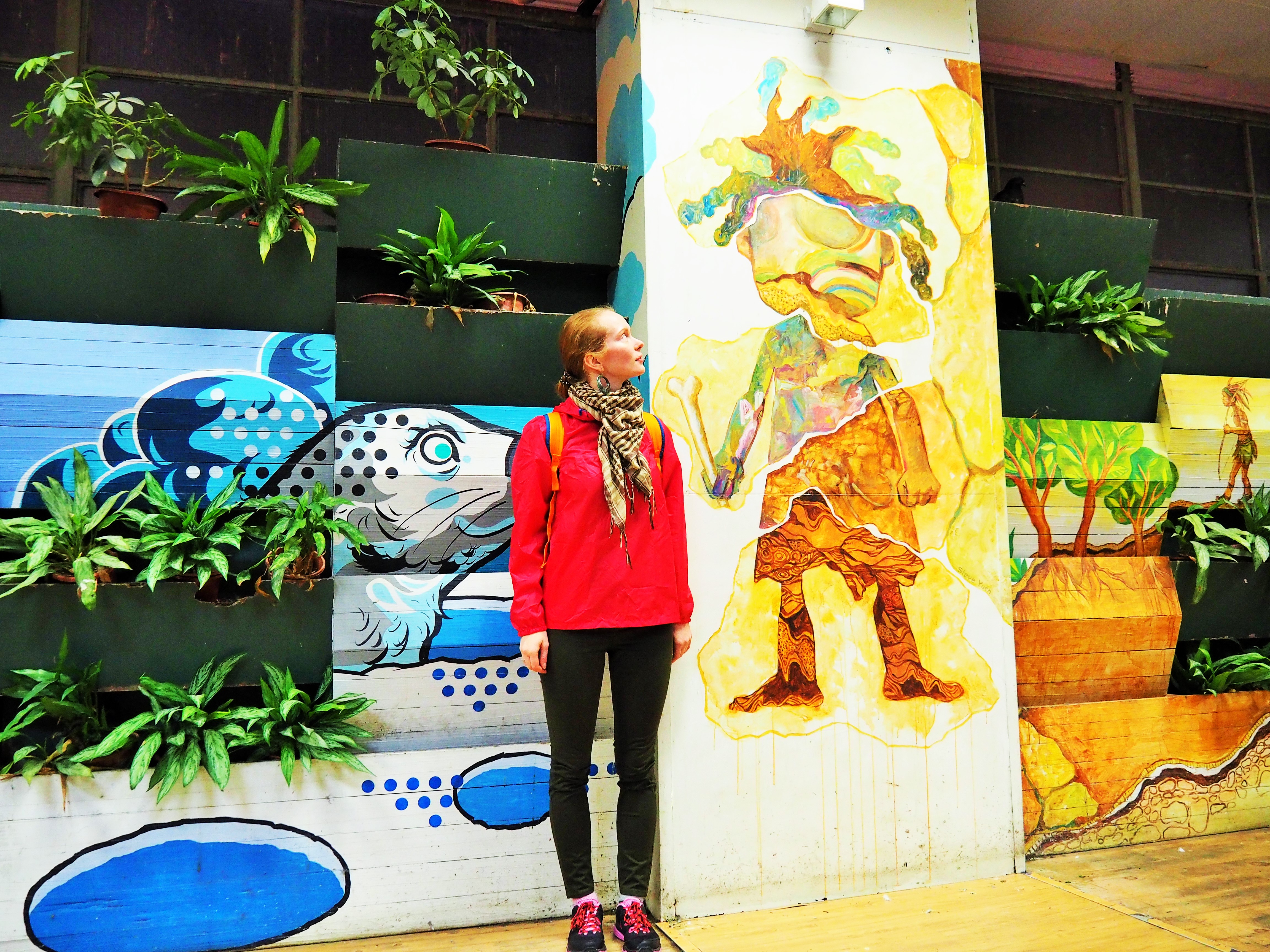
Graffity park
Transport
From the airport you can easily reach the city with the bus 21 or 22 (the price is around 33 – 39 HKD = 4 – 5 Euro, more information about the timetable and routes is on the web site https://www.hongkongairport.com/eng/transport/to-from-airport/bus_from_hkia.html). If you pay in the bus, prepare the exact amount – the ticket machine gives no change. The bus is a double-decker with a surveillance camera, which lets you have an eye on your luggage.

Order is the mother of cleanliness
Inside the city and between the islands, it is very easy to travel by subway. The signboards are clear and comprehensive. Even if you are not a huge fan of the signs, you have to use them, as the underground territory is huge and there are multiple exits. A big advantage of walking underground is air-conditioning. One ride costs from 4 to 13 HKD (at least it was the maximum we paid).
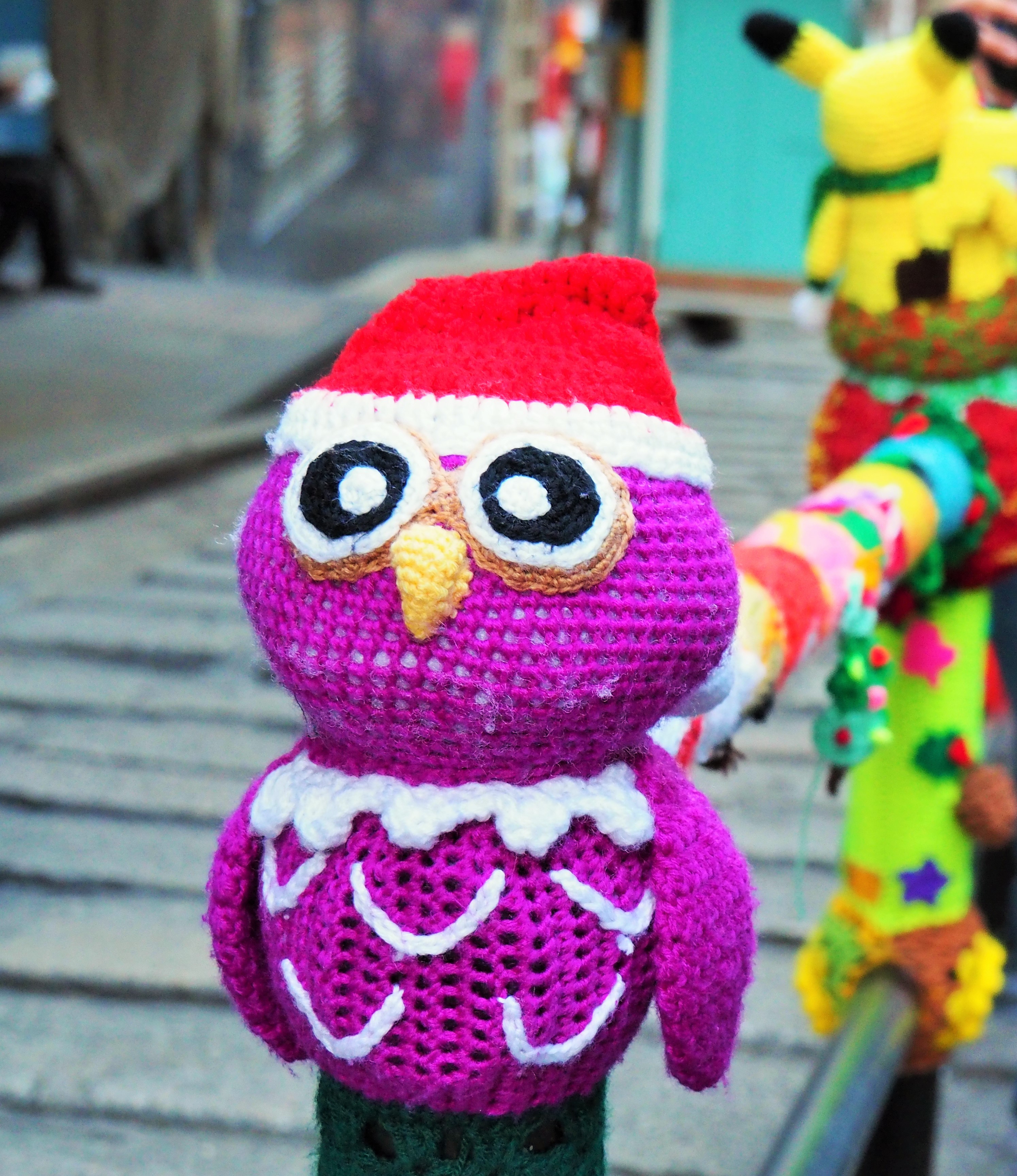
Cuteness on the streets
What to do
The sight number one in Hong Kong is Victoria peak, what explains endless lines to catch the historic train to reach the top. Usually we try to ignore queues – either climb the hills by foot or not visiting the mainstream. Nevertheless, this time we sacrificed our principles (the road was very steep and we were not sure we were on the right way) and stayed waiting for about an hour. We paid 88 HKD for a return trip +observation desk entry. The view is definitely worth the fuss, but it was incredibly windy on the top. Waiting in the line for the train back to the station literally meant freezing our ears off. I was grateful to the buys who persuaded me to take a walk down: the pedestrian road starts ten meters to the right if you stand facing the line to the train. The stroll took about thirty minutes (you can also take a hike up and add another thirty because of the steepness.

View from Victoria Peak
Another must see in Hong Kong is the Ten Thousand Buddhas monastery. It is very easy to reach it by metro and the entrance is free. The area is fascinating. You have to climb hundreds of steps through rows of golden monks to reach the top. There you will rewarded with a colorful temples complex and, of course, with more sculptures. Great view, peaceful atmosphere and the absence of the tourist crowds earn this place its great reputation.

On the way to the Ten Thousand Buddhas Monastery

The Buddhas are known for their infinite patience
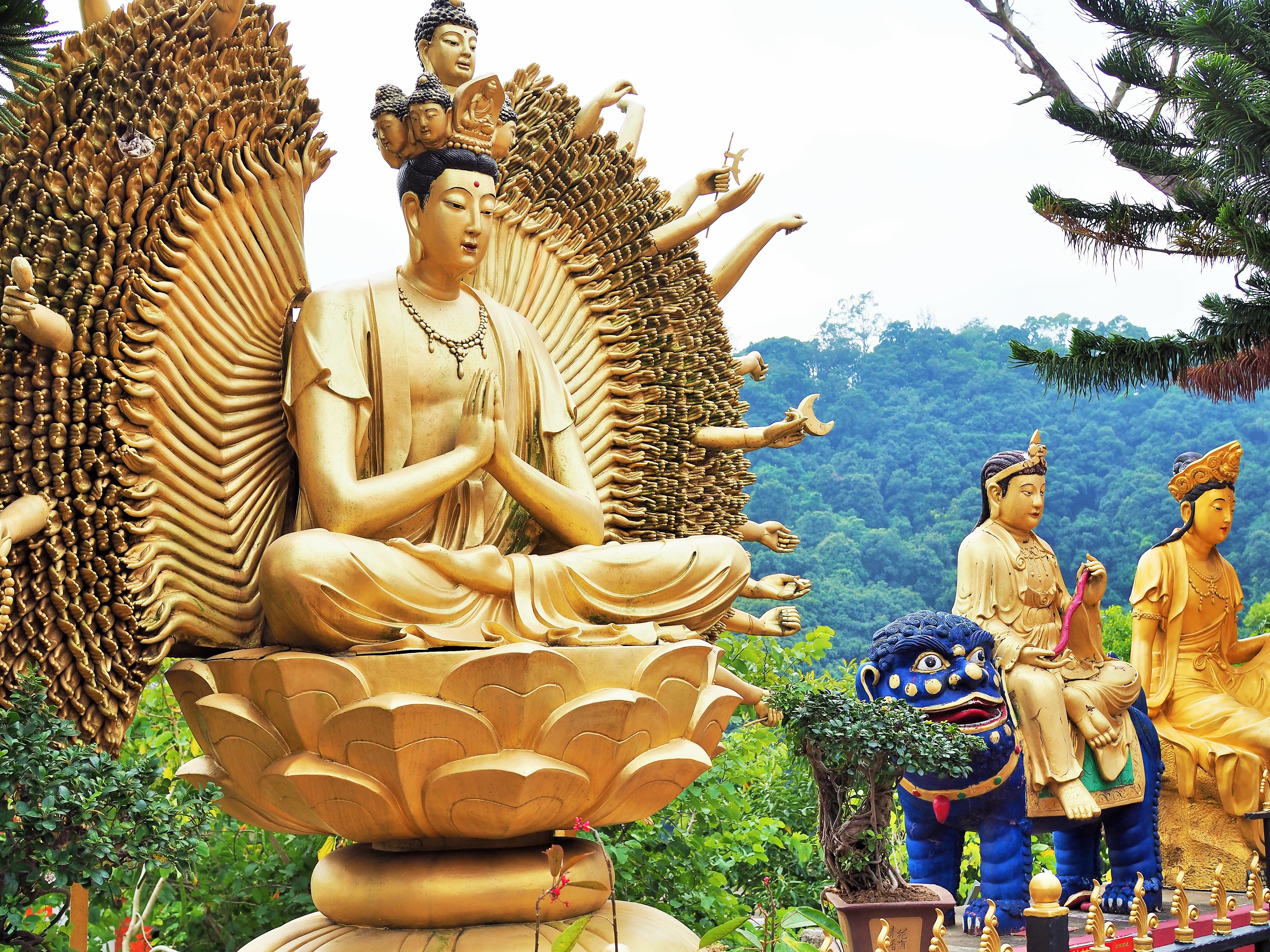
On the top

On the top
I already told you that Hong Kong has much water all around, so this is no surprise that the Hong Kong skyline have to take its place in your list of to-do’s. One of the best places to take a picture and enjoy the freedom of the wind blowing from the sea any time of a day is the Stars Peer. The skyline is elegantly shining at daytime and colorfully glittering at night. On the opposite, the Stars Peer is more charming at night. By the way, I could only recognize the handprints of Jackie Chan, but I’m not so good with the Chinese movies…
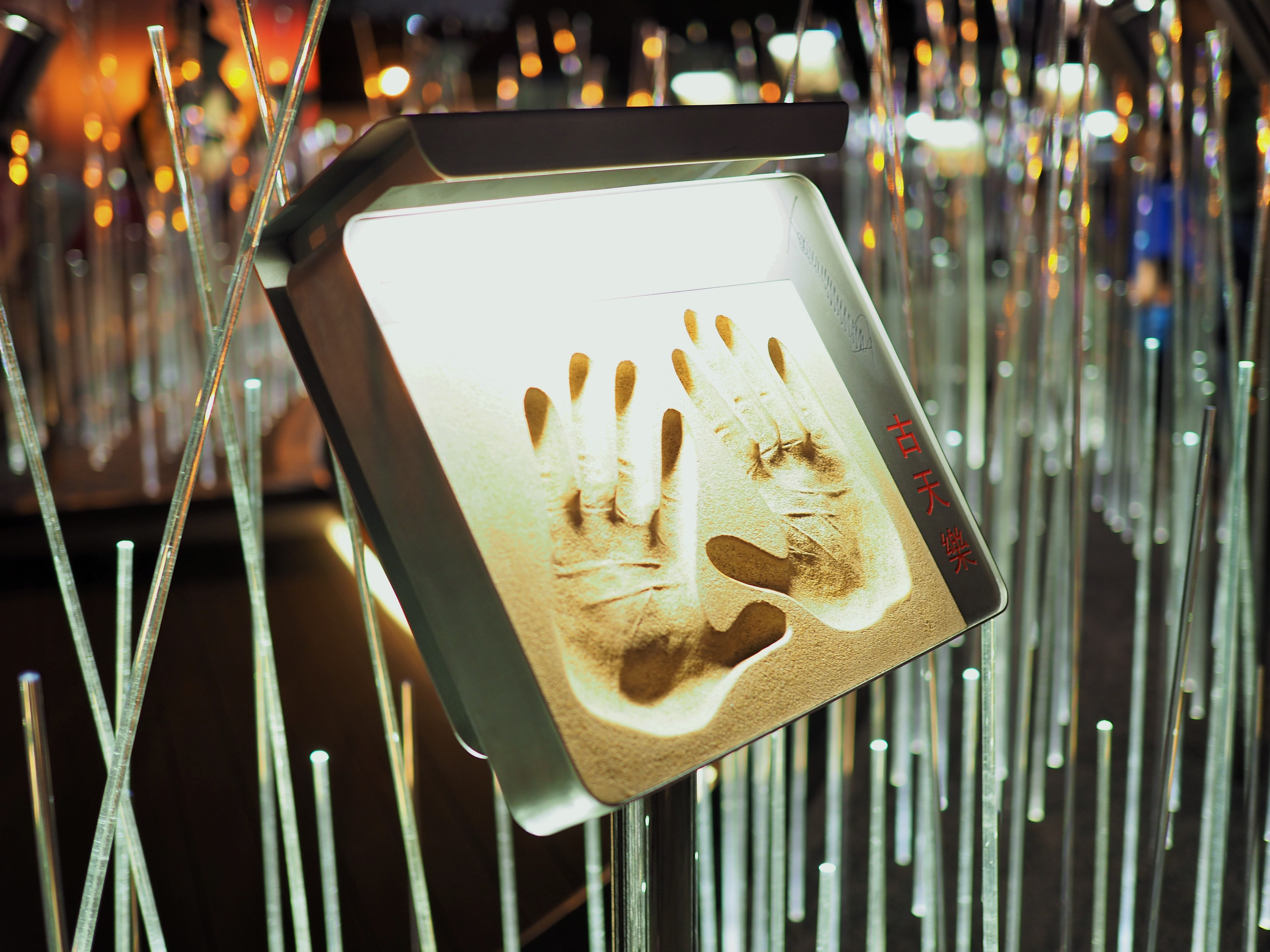
Stars Peer
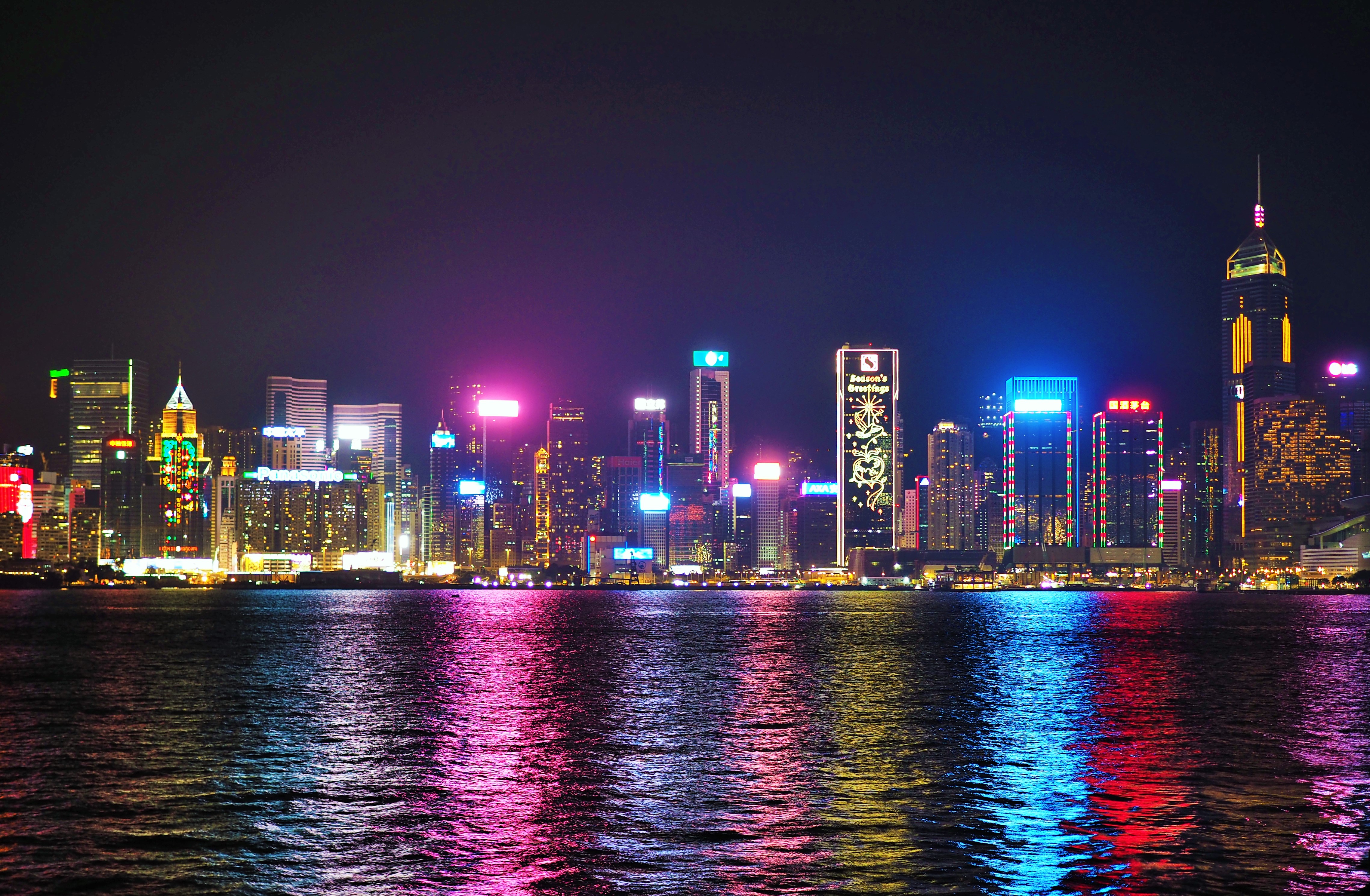
Hong Kong Skyline
Where to eat
The Chinese hot pot has a history of more than 1000 years. For those, who don’t know what it is, I will resume it several words. You sit at a dining table in the middle of which there is a simmering metal pot on an electric stove (so, the hot pot it is!). You choose among the various ingredients (there are pages and pages of them on the menu) which you will afterwards cook in this pot yourself. Usually these are seafood, vegetables, mushrooms, sliced meat and chicken, dumplings and tofu. The cooked food is eaten with a dipping sauce with herbs and spices.

Enjoying the hot pot
So, on our first evening in Hong Kong we couldn’t wait to try it here. We chose Him Kee Hot Pot (408-412 Jaffe Rd, Causeway Bay, Hong Kong) and were not disappointed with our choice (though it was pretty difficult to find the place). If was so much tasty exotic food and it was soooo delicious. We left the place totally satisfied and absolutely full!
In Hong Kong, you have the chance to eat on the budget in a restaurant which have a Michelin star. Officially, the world’s cheapest Michelin-star restaurant – Tim Ho Wan – is situated in Hong Kong. This restaurant is famous for its dim sum – a must try of local Chinese (or Cantonese) cuisine – 3-4 bite-sized portions of different food served in steam baskets or on small plates. Beware: there a several locations in the city, but only three of them were granted a well-deserved star. We went to the Michelin-starred Tim Ho Wan in Sham Shui Po (G/F, 9-11 Fuk Wing Street, Sham Shui Po) on our way to the Ten Thousand Buddhas Monastery.

Menu at the Michelin-starred restaurant
We arrived shortly after the restaurant opened and really didn’t know what to expect (frankly speaking, anticipating long lines in front of the restaurant). Though we were asked to write our names on a sheet of paper and had to wait a bit before we were called out, the waiting time was totally appropriate. To order, you get a printed table with the names of all dim sum types and a pencil and have to write the quantity of those dishes you chose. At first, we were totally lost, not knowing what we want to order (there was a separate menu with the pictures, but it was not so easy to match them). Finally, we pulled ourselves together and basically ticked a good half of the assortment. To avoid confusion upfront, here is the link to the web site of the restaurant – http://www.timhowan.hk/index.php – where you can give a look at the menu and decide about your favorites. We liked the baked bun with BBQ pork, pork and shrimp dumplings a lot. In the opposite, the turnip cake was left untouched. Important: you can pay only cash here! However, you don’t need so much money – one dim sum costs about 1-2 Euro.

Dim Sum
If you like dried salted seaweed, try Tao kae noi – I discovered it in Hong Kon and it is one of my favorite kim chi brands now. Now, when I’m writing it, I’m thinking of going to one of th Asian shops in Berlin to get another portion of this delicious dope.

Our snacks set on the way to Macau
Another great traditional treat to enjoy is egg waffles – you can buy them freshly baked from the small stands on the streets or in local shops. By all means, try bubble tea here – it tastes much better in its motherland than anywhere in the world!

Egg waffles














Leave A Comment